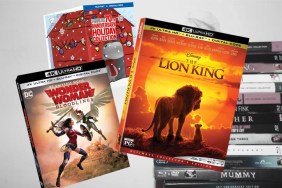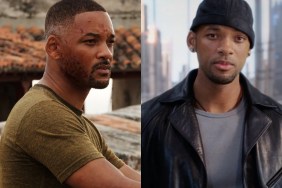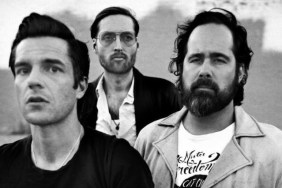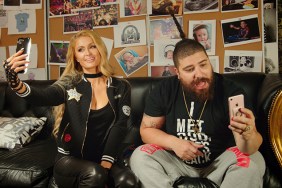
CraveOnline: You made an interesting choice with the cinematography to start rough and handheld while they’re in the paradise of the countryside, and then get steadier and more elegant when they’re on the run. What was your idea for that, when most films get shakier the more unstable they get?
Kevin MacDonald: It’s because in a way, in the first part of the film it’s kind of like an Eden. It’s a sort of paradise and I wanted the camera to be with them and be one with them and the whole thing to feel very organic and also sort of liberated and anarchic. The handheld camera can do that for you, but then in the second half, I leeched all the colors out of the palette, wanted the camera to be sharp and unforgiving and bleak and create a different world for the characters to be in.
Although the second half takes place in the countryside the same way as the first half, the countryside feels very different. It’s more threatening. It’s not threatening. It’s impassive. It’s just looking on. It’s certainly not a comfortable place to be anymore so to have that, how the war has transformed the environment around them, I wanted to represent that in the cinematography.
That’s the thing. Handheld is usually used to represent chaos, which has sort of become a cliché.
Yeah, I’m reacting against that obviously. I think there’s something about the increased objectivity of the lens in the second half that makes it distancing. It makes you feel like the humanity is leeched out of this in a way. To me, handheld and the way that we used it, not in the Paul Greengrassy sort of way, but in the way that we used it has more humanity to it. You can feel the cameraman. You can feel the movement of the breathing and the camera. It feels like it’s alive. In the second half it’s not alive. It’s a mechanical thing.
Is Black Sea your next film?
Yeah, Black Sea I just finished shooting it. I came from Russia where I did the last little bit of second unit on it and I’m going to start editing it next week in London. It’s a very different sort of film. It’s almost entirely male and it’s a thriller set in a submarine.
How did you approach shooting in a submarine?
It’s very tricky. It’s very tricky because all the things that make it wonderful dramatically being in a submarine, which is the claustrophobia, the sense of being in a place you shouldn’t be, the spaceship-like nature, all those things make it very difficult to move the actors and to move the camera. We just developed a style that could work with that because basically a submarine is a corridor, a long cigar shaped thing. Even two people passing is quite difficult so blocking is very different than you would normally do. I spent eight weeks filming of which five was in the submarine, so it’s quite a long time to spend in a few spaces.
Is that any easier now with the size of cameras shrinking versus when they did Das Boot or Hunt for Red October?
You know what, in the end, originally at one stage we thought of using lots of little micro-cameras but there’s something about that style which didn’t feel right to the story. So we actually used a regular camera for most of it. We used an Alexa for most of it but it just meant you have to shoot it a certain way. Also you realize as you’re filming something, if you take the camera outside the set – because we were on a real submarine for some of it and a set – if you took a camera outside of it you instantly feel that you’re not within it. So you can’t just put a camera on a crane and fly around. It suddenly feels ridiculous. You have to be within the claustrophobia on the set.
Fred Topel is a staff writer at CraveOnline and the man behind Best Episode Ever and Shelf Space Weekly. Follow him on Twitter at @FredTopel.






